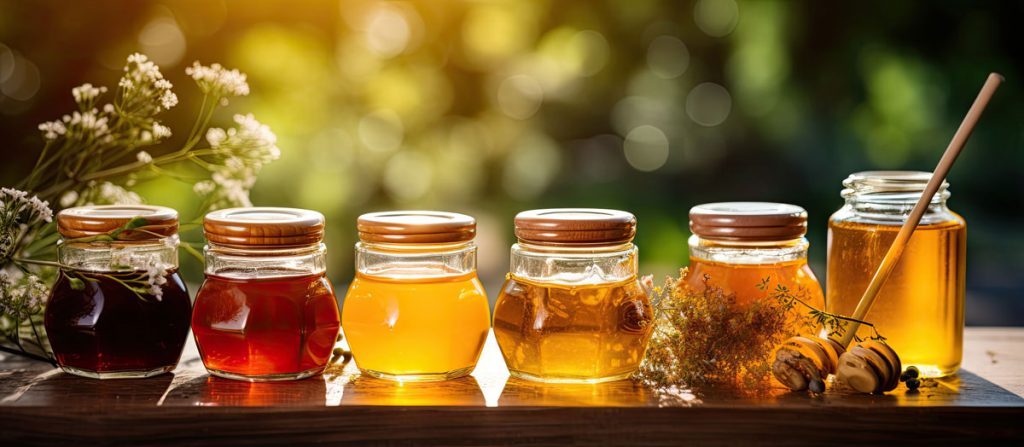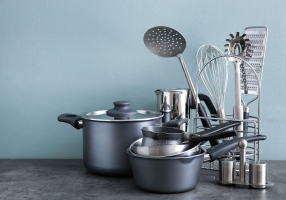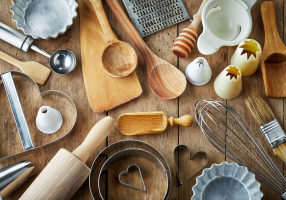Warning: Toxic Cooking Utensils Can Harm Your Health
Hey there cooking fans! Be careful of dangerous chemicals in cooking utensils that could secretly harm your health. They may seem harmless, but these utensils can expose you to toxic substances like Bisphenol A (BPA) and perfluorooctanoic acid (PFOA).
BPA is a chemical used in some plastic containers and cookware, while PFOA is found in non-stick coatings. Both BPA and PFOA can leach into food and have been associated with negative health effects.
In this article, we’ll uncover the risks of these chemicals in utensils, help you spot safer BPA-free and PFOA-free options, and highlight the benefits of choosing non-toxic cooking tools. Read on for our top picks of safe, chemical-free cooking utensils for a healthier kitchen.
Let’s cook safely!
The Harmful Effects of Toxic Cooking Utensils
Using cooking utensils made with toxic materials can really damage our health. When we use plastic utensils or non-stick pans, harmful chemicals like BPA and PFOA can leach into our food. These chemicals have been linked to hormone disruption, fertility issues, and even cancer.
And if that’s not bad enough, when these utensils get hot they release toxic fumes that we breathe in. This can cause breathing problems and other concerning respiratory effects.
It’s vital to know what your cooking utensils are made of and choose safer natural materials like stainless steel or cast iron. That way, you can protect your health and avoid the risks of toxic cooking utensils.
Understanding the Dangers of BPA in Kitchen Utensils
BPA is a chemical used to make some plastic kitchen tools and containers. It’s been associated with hormone disruption, fertility problems, and increased cancer risk.
When hot foods or acidic liquids contact plastic containing BPA, the chemical can leach into food and drinks. This is concerning since we often use plastic tools for cooking and serving hot meals.
To be safe, it’s wise to choose kitchen utensils made of stainless steel, glass, or silicone instead of BPA plastics. This helps you avoid exposure to this potentially hazardous chemical.
How to Identify Non-Toxic Cooking Utensils
To protect your health, it’s key to know how to spot non-toxic cooking utensils. The good news is there are a few easy ways to do this.
First, check the material. Choose utensils made from stainless steel, glass, or silicone – these are generally considered safe. Avoid plastic or non-stick coatings which may contain toxins.
Next, look for “BPA-free” or “PFOA-free” labels. This indicates testing has confirmed the product is free of these harmful chemicals.
Lastly, research any questionable utensils further or ask experts to determine safety. Being informed is key to reducing your toxin exposure.
The Benefits of Using BPA-Free Kitchen Utensils
Using BPA-free kitchen utensils has many advantages for your health and eco-friendliness. Here are three key reasons to make the switch:
Safety – BPA can leach from some plastic into food and drinks. Research connects BPA to hormone issues, infertility, and cancer risks. Avoiding BPA utensils reduces this concerning chemical exposure.
Healthier Food – BPA-free utensils won’t contaminate food with toxic chemicals during cooking and serving. Your meals will be safer and more nutritious without chemical residues.
Eco-Friendly – BPA-free utensils are often more durable and long-lasting than disposable plastic. Choosing these sustainable options reduces plastic waste and your environmental footprint.
Making the healthy switch to BPA-free kitchen tools protects you and the planet. It’s a simple change that makes cooking safer.
Top BPA-Free Kitchen Utensils for a Healthy Cooking Space
The top non-toxic cooking utensils for a healthy kitchen are stainless steel options. Stainless steel is durable, non-reactive, and won’t leach chemicals or break down from heat.
Unlike plastic or non-stick, stainless steel is reliably safe. It resists stains, rust, and corrosion for easy cleaning. Plus, stainless steel handles hot temperatures flawlessly when cooking.
Whether it’s spatulas, whisks, pots or pans, stainless steel cookware and utensils are ideal for safe, non-toxic cooking. Investing in these items helps ensure many years of healthy and enjoyable time spent cooking.
Frequently Asked Questions about BPA
Are BPA free water bottles safe?
Yes, BPA free water bottles made from materials like stainless steel, glass, or Tritan plastic are considered safe options. They don’t contain BPA, a harmful chemical found in some plastics.
Can BPA cause cancer?
Some studies have linked BPA exposure to increased cancer risk, but more research is needed. To play it safe, limit exposure to BPA by choosing BPA-free products.
Can BPA be absorbed through the skin?
While most BPA exposure occurs through ingestion, some studies show a small amount of BPA can be absorbed through the skin. It’s smart to handle receipts carefully and wash hands after touching thermal paper.
Can BPA free plastic be heated?
Yes, BPA-free plastic labeled microwave safe can withstand heating. Avoid putting all plastics in the oven or on the stovetop, which can release chemicals. Glass or ceramic are the safest for hot foods.
Are BPA free cans safe?
Yes, cans now made without BPA linings are considered safe alternatives. Look for “BPA-free” on the label. Stainless steel, glass, and cardboard composite cans don’t contain BPA.
Can BPA cause infertility?
Animal studies show BPA exposure is linked to infertility. While human data is limited, it’s smart for couples trying to conceive to avoid BPA.
Can BPA be filtered out of water?
Standard water filters like pitchers and faucet mounts aren’t designed to remove BPA. Reverse osmosis or activated carbon systems provide the best filtration. Or drink BPA-free bottled water.
Can BPA cause headaches?
There is no definitive evidence that BPA causes headaches. But limiting exposure to BPA and other chemicals in plastics is still recommended to reduce health risks.
Are BPA free plastic bottles safe?
Yes, BPA-free plastic bottles made with Tritan plastic, like Nalgene, are considered safe. Glass and stainless steel bottles that never contain BPA are even safer choices.
Are BPA free products safe?
BPA-free products made without this chemical are safer than those containing it. But some other chemicals in certain plastics may still have risks. Choosing natural materials like glass and stainless steel guarantee safety.
Are BPA free baby bottles safe?
BPA-free baby bottles remove the risk of infant BPA exposure. However, glass baby bottles are recommended as the absolute safest option since they contain no chemicals whatsoever.
Are BPA free plastics safe?
BPA-free plastic alternatives like Tritan or polypropylene are considered safer but not completely harmless. For 100% safety, opt for glass, stainless steel or ceramic which never leach chemicals.
Can BPA be washed off?
Simply washing BPA-containing items won’t remove the chemical, since it’s integrated into the plastic material itself. Avoid BPA plastics altogether for guaranteed safety.
Can BPA enter through skin?
While ingestion is the main route of exposure, some studies indicate BPA can be absorbed through the skin from handling receipts, toys and other thermal paper. Minimize skin contact for caution.
Can BPA cause acne?
There isn’t strong evidence linking BPA to acne. But hormone-disrupting chemicals may exacerbate acne, so seeking lower exposure can’t hurt. There are many other good reasons to avoid BPA.
Are BPA plastic bottles safe?
No, regular plastic bottles containing BPA are not considered safe, especially when used for hot liquids. Choose BPA-free bottles or better yet, use glass or stainless steel to avoid this chemical.
Can BPA be inhaled?
Yes, BPA can be inhaled when plastic containers or bottles that contain it are heated, or if powders with BPA are handled. Avoid heating plastics and choose BPA-free versions whenever possible.
Can BPA cause autism?
While more research is needed, some studies suggest there may be an association between BPA exposure and increased autism risk. Reducing exposure during pregnancy is recommended as a precaution.
The Takeaway on BPA and Kitchen Utensils
The key points to remember are to beware of BPA and other chemicals in cooking utensils that could create health hazards. Seek out safer BPA-free and non-toxic options, especially stainless steel.
Making small switches to remove plastic utensils containing concerning chemicals can meaningfully reduce your risk and create a healthier cooking environment.
So inspect your kitchen tools and consider upgrades to avoid BPA. Your health is worth it! Now get cooking safely.
Additional Resources
The dangers of BPA
The Mayo Clinic overview on BPA: https://www.mayoclinic.org/healthy-lifestyle/nutrition-and-healthy-eating/expert-answers/bpa/faq-20058331
Study on BPA toxicity from the National Institute of Environmental Health Sciences: https://www.niehs.nih.gov/health/topics/agents/sya-bpa/index.cfm
BPA-free alternatives:
FDA information on BPA in food containers: https://www.fda.gov/food/food-additives-petitions/bisphenol-bpa-use-food-contact-application
American Academy of Pediatrics advice on BPA-free baby bottles: https://www.healthychildren.org/English/safety-prevention/at-home/Pages/What-to-Look-for-in-Safe-Plastic-Baby-Bottles-and-Food-Containers.aspx





